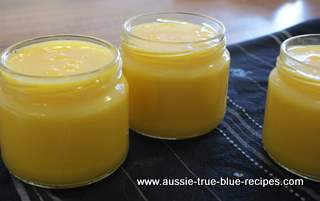This recipe is deceptively simple, but just so delicious and moist. The pie apples make the difference.
Before beginning ensure you have a large, deep heat proof bowl that fits into an even larger saucepan.
500g Currants
500g Breadcrumbs
4 tablespoons Flour
500g Brown sugar
110g Pie Apples
4 tablespoons Brandy
8 Eggs
1t Salt
Combine the ingredients for the fruit mix in a large bowl.
Using a mixer, mix all the pudding ingredients together. Don't mix too long, you don't want to mix air into this.
Stir creamed butter mixture into fruit.
Place in pudding basin and steam 5 hours. To do this watch http://www.bbcgoodfood.com/technique/how-steam-pudding, or see the instructions at the bottom of this page. I never remove and replace the foil and baking paper, but it still keeps for months.
Cool thoroughly.
500 grams icing sugar
20-100 mls brandy, to taste
Cream the butter and sugar with electric beaters. Whip until lightened in colour.
Add brandy tablespoon by tablespoon, tasting after each addition until it is to your liking.
Before beginning ensure you have a large, deep heat proof bowl that fits into an even larger saucepan.
Fruit Mix
500g Raisins500g Currants
500g Breadcrumbs
4 tablespoons Flour
Pudding Mix
125g Butter500g Brown sugar
110g Pie Apples
4 tablespoons Brandy
8 Eggs
1t Salt
Combine the ingredients for the fruit mix in a large bowl.
Using a mixer, mix all the pudding ingredients together. Don't mix too long, you don't want to mix air into this.
Stir creamed butter mixture into fruit.
Place in pudding basin and steam 5 hours. To do this watch http://www.bbcgoodfood.com/technique/how-steam-pudding, or see the instructions at the bottom of this page. I never remove and replace the foil and baking paper, but it still keeps for months.
Cool thoroughly.
On Christmas Day, remove the foil and run a knife around the outside of the pudding. Place a plate over the top of the pudding and turn it upside down. Lift the basin off.
Microwave on medium until hot, about 15 minutes. Heating this in the microwave is amazingly easy and tastes exactly the same as steaming.
To flame the pudding, gently heat about 75 mls brandy to a little warmer than body temperature. Pour this over the warm pudding. Bring to the table, and then light with a match.
Serve with Brandy Butter.Brandy Butter or Hard Sauce
500 grams butter, softened,500 grams icing sugar
20-100 mls brandy, to taste
Cream the butter and sugar with electric beaters. Whip until lightened in colour.
Add brandy tablespoon by tablespoon, tasting after each addition until it is to your liking.
Tryst House
10 Finkle St
Market Weighton,
Yorkshire
Kitchen Aid method
Cream butter and brown sugar with K beater. Add pie apples
and continue until they’re mashed.
Add the rest of the wet ingredients. Add flour.
With dough hook add the rest of the dry ingredients. Steam 5
hours.
To steam the pudding
Take a large sheet of aluminium foil and a piece of
buttered greaseproof paper about the same size. Make a pleat by folding a
crease in the centre of both the paper and the foil.
Turn the buttered sheet over so the foil’s on top and
press it around the bowl with the fold on top. Tie the foil tightly around the
bowl using a long piece of string.
Trim away excess foil and greaseproof paper. Leave about
two inches or 10 cm of foil and paper around the sides of the bowl.
Tuck the paper in and fold the foil around it to totally
encase the paper and give the pudding a water-tight seal.
Make a handle for bowl by threading a double length of
string through the string already tied around the pudding. Pull it through to
the other side and secure. The pudding is now ready to go into the pan.
Place the pudding into the steamer set over a saucepan of
simmering water, or use a large saucepan with a saucer in the bottom.
Steam for several hours, or as recipe indicates. Top up
water when necessary.
When the pudding is steamed, cut the string around the
bowl. Gently ease away the paper and foil.
Before storing the pudding ready for re-steaming, recover
with a fresh sheet of foil and paper as before. Tie a handle around it for ease
of removing


















